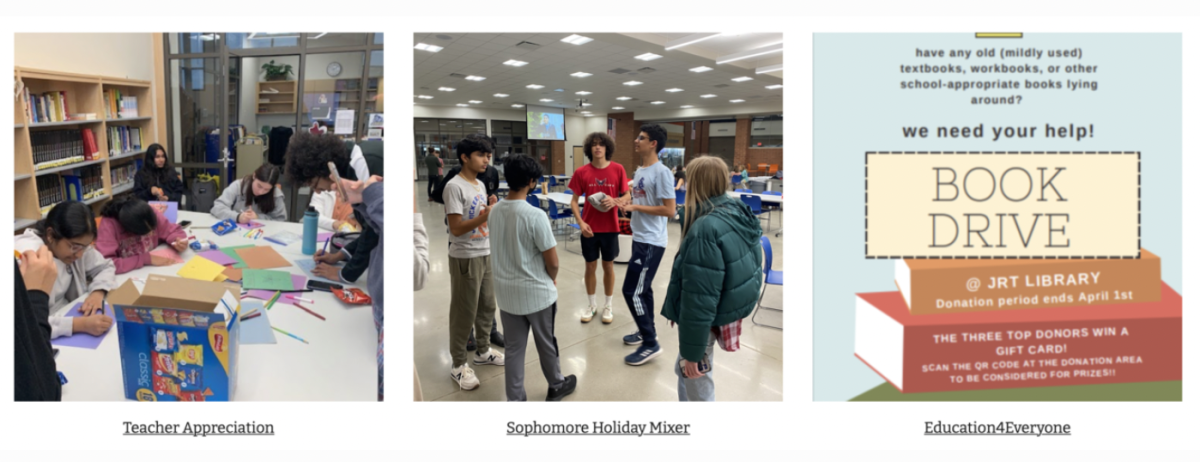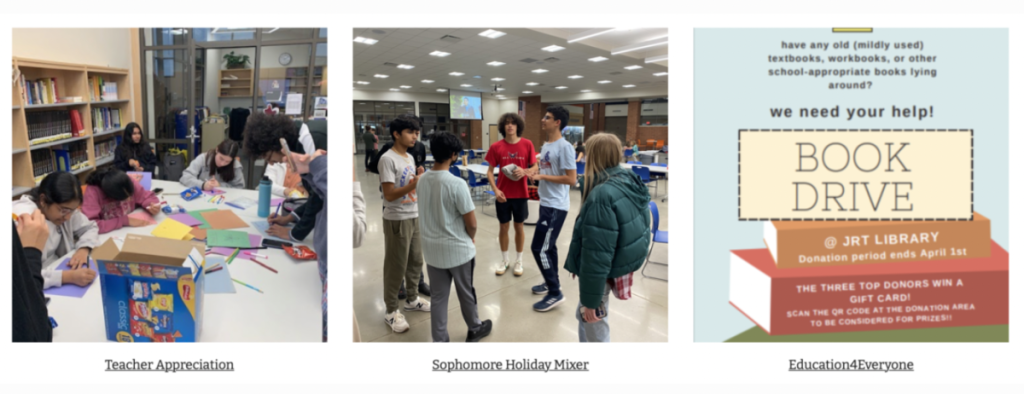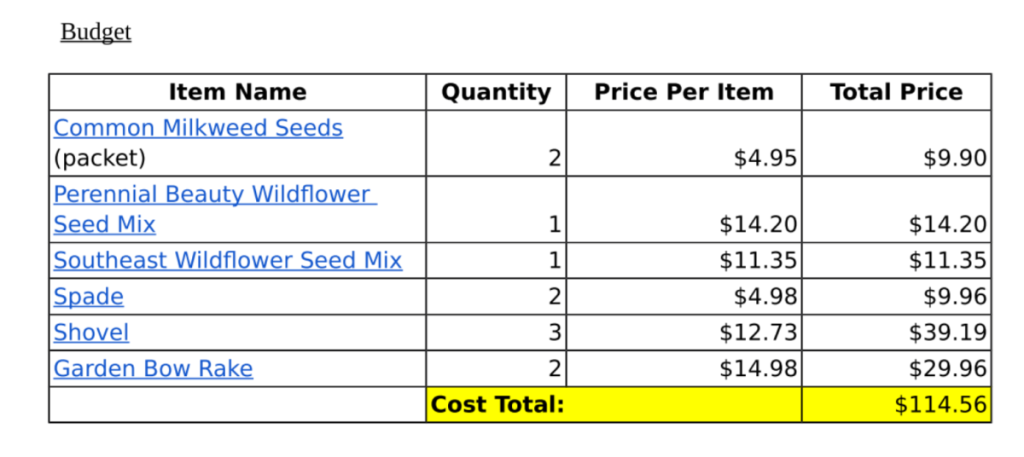Seeds of Change: Mini-Grants for Social Change and Conflict Transformation
0May 31, 2023 by Colin Baumgartner

This fall, my students at J.R.Tucker High School in Henrico, Virginia, received a BLTN Change Action Grant from Middlebury’s Kathryn Wasserman Davis Collaborative in Conflict Transformation. Because my students this year were a particularly socially-conscious group, I designed my grant application to challenge them to write their own mini-grant proposals targeting local issues in their school and community. We applied for $2,000 to fund student mini-grants up to $200 each.
Once we were funded, I walked them through a sample presentation—my pitch to beautify the low-income neighborhood where I live. Students then eagerly discussed a wide range of conflicts at the school, neighborhood, and even community levels. The opportunity to make their voices heard and to take some immediate action gave each class session a great burst of energy and enthusiasm. Students wrote proposals, including detailed budgets and narratives. Those who were funded conducted their projects and documented their work for public audiences. Proposals targeted recycling, art, reading, teacher appreciation, social exchange among students, equity in education, mental health awareness, makeup for disadvantaged women, neighborhood isolation, and trash spread.

It became immediately clear to me that students are much more thorough and thoughtful in their writing when the scope of the writing is expanded beyond the classroom into the real world. Many of the students went well beyond the requirements of the grant proposal research with deep dives into educational inequality, mental health issues facing young people, disconnects and even outright dislike among groups in the school, etc. Below is a complete proposal by one of the groups, focusing on educational equity.
All of this new knowledge was detailed beautifully in many of the grant proposals, which encouraged students to pay closer attention to detail than they might otherwise in traditional classroom work. One example of this attention to detail came through in the budget outline students needed to submit with their proposals. Students were great about thinking about solutions to the conflicts they noticed and then figuring out how to make their grandiose ideas fit within the confines of a small project budget.

While I had hoped for a more formal process with a faculty adjudication team, I ended up deciding who would be funded based on criteria I shared with students.
- Does the proposal clearly articulate that the team is addressing a conflict in their community that is urgent?
- Do students back up their assertions with proof and solid research?
- Do they present a clear vision for how they can affect change and alleviate this problem?
- Is this solution manageable & are the steps forward clearly articulated?
The grant proposals were of course still classwork, so the real test of student writing and communication abilities came after funding, when students were writing not to me, but to audiences beyond the classroom. When given the reins, students were assertive about writing school-wide messages and reading these announcements over the PA system in the morning, creating posters for interest meetings and events, emailing administrators for permission to host events or to claim portions of the green spaces around the school, and even posting messages in neighborhood association forums and Facebook groups. The students proved themselves again and again to be great communicators, energetic idealists, and driven organizers.
All of this was a fun reminder for me as an educator that when you remove impediments, the students will often surprise you with just how driven and capable they are. Students took advantage of technology, social media, and face-to-face organization to make their ideas a reality. What seems most striking about this is that students didn’t have many resources to accomplish their projects. Though $200 is not much money, the idea of being a grant recipient and having a formalized plan gave the students just the spur they needed.
Many of my students suggested that they felt their voices aren’t heard in their day-to-day lives. They often think deeply about causes they care about and have ideas about how to affect change, but feel that adults don’t take their ideas seriously because they are young. Encouraging students to take action and giving them the power (and some of the authority of a grant) pushed students to believe in themselves. Students were quick to take action and leverage the tools available to them. The range of funded topics is impressive. (See the list funded projects below.) One surprise to me was how many students picked up on the use of food to make connections and build community. This common thread through so many of the grant projects makes me think of BLTN member Brent Peters’ book Say Yes to Pears and his assertion that food can form a powerful community and group identity. On an intuitive level, my students knew this and tapped into this power for their meetings and their events.
Was everything smooth and successful? Certainly not. Many students were frustrated with the sluggish nature of communication. Others had to change plans when partnerships with organizations fell through at the last minute. But even with these abrupt and frustrating setbacks, students were great about quickly changing their footing and reaching out to new organizations or coming up with new plans.
Here are some of the key challenges and questions I’ve framed for a more refined approach in the future:
- Delays and setbacks: Many of my students experienced one setback after another. Some students became disillusioned due to difficulties communicating with unresponsive organizations or adults. Quite a few had plans in place with organizations outside the school only to have the organizations flake out on the plans last-minute. If one major goal of the project was to empower and inspire students to view themselves as agents of change, how can I best support students through these frustrating setbacks?
- Time to teach grant writing: Because of time constraints and other factors, I wasn’t able to get into as much depth and detail with grant writing as I’d hoped. If and when I do a similar unit in the future, I will need to set aside more time to really dig into all the parts of the grant writing process. I didn’t have much time to dedicate to revision and rewriting, so students didn’t have the opportunity to work with multiple drafts to create the best possible proposal. I wonder how and where I might carve out more time in the year.
- Structure vs. independence: I wanted to give students as much independence and freedom as possible. At the same time, sometimes I found myself scrambling to help students who had waited until the last possible moment to do something. I had students come up with timelines, but even so, there were stressful moments due to plans not being fully fleshed out. How can I find a better balance between structure and freedom to ensure that the projects don’t become stressful as the deadline draws closer?
- Broad focus: Many students had grandiose ideas about large-scale projects that were involved and multi-faceted. On some level, it is great that students are ambitious and optimistic about the mission of improving the community. I would like to help students select more manageable projects that have a smaller focus. I would like to inquire more into how I as a teacher can help students navigate this balance between lofty ambitious goals and more realistic, achievable goals.
- Group conflict: Supporting students through conflicts within the group. Since most of the projects were done in a group, there were inevitably some conflicts when group members disagreed about the vision or direction of the projects. How can I facilitate conversations and compromise so these disagreements don’t boil over?
Even students who wrote proposals but didn’t receive a grant from me have talked about applying for grants and dreaming up projects to pursue on their own. Many joined up with groups that were funded, and some have talked about applying for grants and dreaming up projects to pursue on their own.
My big takeaway from this project is that students are often much more capable and thoughtful than we assume. Young people are deeply aware of the social issues and conflicts around them and most have an honest desire to do something about the conflicts in their communities. I have some students who are now working on larger grant applications and are taking initiative themselves outside of class. Some of the initiatives dreamed up by the students will now continue on; for example, one of the groups started a gardening project and this club will continue to meet. The group has planned plantings around the school. The goal is to create beauty and encourage pollinators around the building. These projects have given birth to student-run clubs that will hopefully continue to run for years to come.
This was ultimately the goal of the project: to sow seeds and empower students to do things themselves once the grant projects have ended.
Seeds of Change: Funded Mini-Grants
- Example Presentation – Mr. Baumgartner – $65 – I explained how systematic initiatives have served to concentrate poverty and despair in one particular neighbourhood in Richmond (where I live). I explained my vision for spreading beauty in the otherwise concrete and dirt environment through planting wildflowers.
- Recycling Initiative – Asmi, Keertana, Megan, & Nira – $80 – students wanted to address environmental conflict by educating elementary students and hosting a recycling competition at a local elementary.
- Diverse Art Show – Jonair & Menna – $150 – concerned about the lack of diversity in the art world, students partnered with a local restaurant to showcase art by a pool of students with diverse identities.
- Magic in Reading – Tien & Smrithe – $200 – concerned about lack of reading in younger kids, students host reading events at a local library and encourage young readers.
- 10th Grade Social – Abhinav, Jaewon, Thomas, Ethan – $110 – a social mixer to encourage friendships across populations (students in specialty programs rarely see students in other specialty programs or students from the general school population).
- Teacher Appreciation – Vaidehi, Renn, Brook, Jahnavi – $200 – students came together to write cards to teachers expressing gratitude and delivered little bags with snacks and treats.
- Clothing Drive – Ashley, Ramitha, & Harini – $200 – students organized a clothing drive to support homeless folks in the Richmond area. Students ran this drive in the form of a competition at school.
- Mental Health Awareness – Simran, Cristina, Nicole – $180 – Students organized a space in school where students could post anonymous notes about concerns/frustrations/mental health awareness and receive thoughts/support from others.
- Gardening Club – Helena & Natalie – $115 – students wanted to educate the population about gardening and make use of spaces around school to grow flowers and vegetables.
- Education4You – Saanvi & Siri – $200 – kids created a site shedding light on unequal access to resources in the school district, organized drives for school supplies, shared encouragement for new teachers.
- Makeup for YWCA Women – Rhea – $126 – group of student volunteers work with homeless, trans, and formerly incarcerated women to give back confidence & feeling of beauty through makeup.
- Neighborhood Block Party – Rohit, Harris, Amish, & Om – $200 – students hosted a party to rekindle kinships and eliminate feelings of isolation between neighbours.
- Trash Plogging Event – Addison – $200 – addressing issue of trash spread around parks, students come together for trash pickup events and post some signage about not littering.
Category BLTN Teachers, Conflict Transformation, Featured, Spring / Summer 2023 | Tags:


Leave a Reply